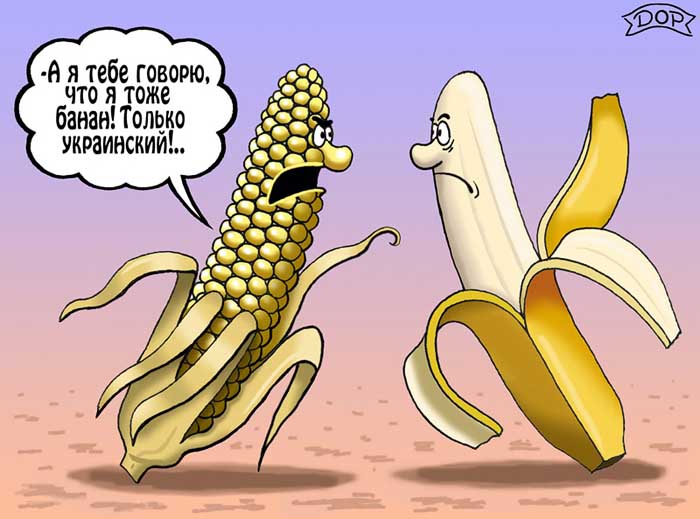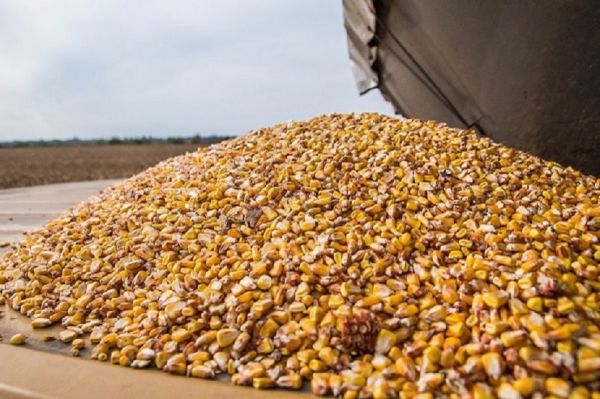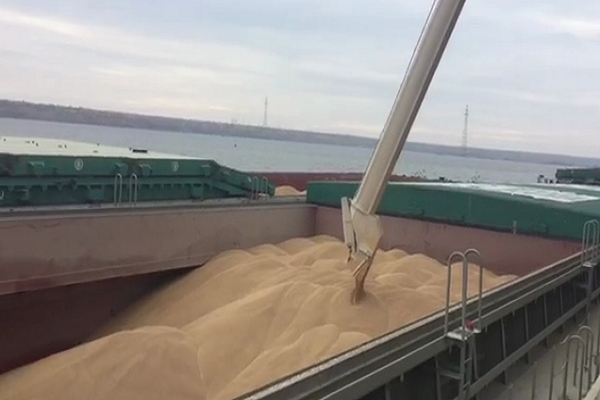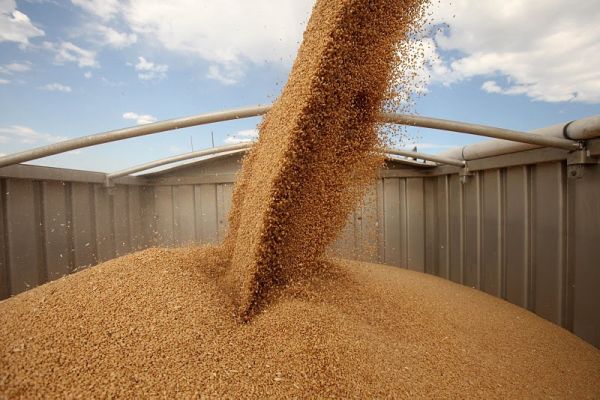Grain and the City: Corn on the Warpath
Markets, as well as parachutes, work only if they are open.
Helmut Schmidt, former German Federal Chancellor
It has never been like this and now it is exactly the same again. Pharaohs and Vikings, Varangians and Greeks, and later, all the king’s horses and all the king’s men, humpty-dumptys and their cohorts have always been eager to expand their commodity and raw materials markets. By exchanging beads for gold, not only did legendary marco polos et al. map new continents and islands but also introduced Europeans to corn, sunflower, potato, strawberries and other things of which our current Ukrainian export is particularly proud.
In order to hedge risks, merchants, whose names are now forgotten, fostered the first multinational corporation – East India Company. However, since 1600 priorities have shifted from spices to oil and everything humans and animals can eat (although in the end, the latter get eaten by the former). And while few of us can feed on prana, the majority is fed on palm oil.
Sketch One
Under the guise of well-intended protectionism, monopolists and oligarchs of all times have always been trying to seize foreign markets for export and close their markets for harmful imports by hook or by crook. When the world was young and there was neither Twitter nor Bloomberg, countries worked out tariff regulation, having tried out state-supported piracy and trade blockades first. All kinds of defensive duties and quotas, international loans and humanitarian bush legs have become instruments of trading moremovers. The benefits of the Navigational act drove the Dutch out of the sea, and hailed a new empire on the ruins of the old one as the aftermath of the Boston tea party in the mere 300 years.
Related story: 7 Myths of Palm Oil
Following the millennial trade wars of the Colonial Era, we inherited a new political map of the world with shifting economic hotspots. However, territorial expansions and redrawing of borders for the sake of better marketing or mining opportunities have become less overt. Politics or psychoanalysis aside, the two World Wars, large-scale embargoes and the world crisis in between have taught us that the whole world is a big bazaar, and your yesterday’s enemy may be your tomorrow’s buyer.

There is hardly a person today who doesn’t know about the US-China trade conflict. It is not the first one, though. Almost 200 years ago, these countries, along with England and France, clashed in the Opium Wars. Mr. Smoot and Mr. Hawley went down in history and inspired Mr. Trump. I am not that old to have an heir of my millions to show me the history book. Is there anything about consequences? I mean, beside the Breton Woods Conference and group deliveries of IMF and IBRD.
The birth of WTO took a little longer with a bunch of tariffs to be abolished (wars bred hunger, which had to be eliminated first). GATT untied the hands of the US, and it began dumping right and left, imposed an embargo on China and cunningly entered the market masquerading as Japan. Tip your hats for “shrimp from Belarus”.
In the overall standings, the second half of the last century was gastronomically oriented: soy, banana, fish and crab conflicts were periodically disrupted with few car- or other non-food conflicts. Then "perestroika" happened and GATT rose like a phoenix, new ties were made with new market players, tigers, dragons and other beasts stirred in Asia, and plant relocation and other sins described in Confessions of an Economic Hit Man flowered.
Related story: 5 Trends of Future Commodities Market by FAO Economists
In the meanwhile, China minded its own business. It didn’t join the WTO and calmly flooded the markets of developing countries with unprecedented and outlandish goods, repeating the beads scenario; except that it was exchanging beads for local cash instead of gold and spices. The business went so well that China started investing in the neighbouring countries in the 2000s and finally joined the WTO. By the time it did, “made in China” had turned into a brand, which, I suspect, may easily compete with Amazon. At first, the world community got scared, then chilled down and channelled its energy to the Qatar thing. In response, the Celestial Empire has been successfully devaluating the renminbi rate ever since.

Then it was 2007. It is memorable not only for the birth of the famous Nikita Neroba, but also for the world crisis. While everyone was concerned with inventing new barriers, trade was falling like the spring Kiev snow, its fall being intensified by the Arab spring. In the end, everyone turned against everyone forging allies with enemies against worse enemies while China continued to buy friendship with yuan loans.
After the Opium Brawl 200 years ago, the world has learned to enjoy Simpsons, which foresaw the Trump presidency by the way, the dollar is getting cheaper, Donald goes on shocking the public with new messages. The USA is China's largest trading partner, however, the Celestial Empire remains a net exporter. China buys 0.7% of the US GDP while its exports there reach more than 3% of China's GDP. At the same time, China imports high-value-added products while exporting primarily consumer goods. Despite the huge domestic demand, grain is on the export list as well, apparently because the Chinese have learned their lesson during all those wars.
I'll add a couple more sketches. The total world production of soybeans in the past MY amounted to 350 million tons. China produced only about 14 million and imported the rest. The import scheme looked similar to this: it is necessary to replace American soybean imports with imports from other countries. Argentinian soybean is almost entirely bought by China. Brazil has a couple of other buyers, but even if it had none, Brazilian soybean would not be enough to feed all Chinese cows. China would have turned for soybean to Ukraine if only Ukrainian soybean processors were not that vigorously supported by the state. Here is your food for thought.
Sketch Two
A quarter of corn imports to China came from the USA. But that’s a thing of the past. China has been considering Ukraine as a grain trading partner for quite some time. The GMO scandal, spotlighted by the exchange of the list of taxable goods between the States and China was the last straw. However, the Ukrainian-Chinese partnership has its own legendary history of USD 1.5 billion and five capital letters. Of course, China has not forgotten it. And of course, it will resurface when it is least needed. On top of that, we have Russia for a neighbour and, for those who love conspiracy theories, the summer wheat bubble-2017. But don’t get me started.
In truth, the long lists of new reciprocal US-China duties are just that — lists on a piece of paper with no real effect, but the hysteria over them has well affected world exchanges. Fortunately, there is Facebook and other social media to fuel the panic.

By and large, the grain market depends on other markets. On a global scale, money simply flows from one market to another, following the profit, which, in its turn, depends on supply and demand. It is not the same as price changes, which are influenced by the expectations of market participants. The supply and demand balance in the grain market depends on the grain stocks and its consumption. The rate of eating is slightly higher than the supply rate. If wheat is produced relatively fast, other types of grain are slow to grow and fast to consume. Over the past 3 years, the consumption of the slow-to-grow grain has exceeded its production by 3 pp. Which means who knows what:) It’s life.
Everybody laments the change in the structure of crop areas and mass production of corn: American, Ukrainian, and Brazilian farmers seem to increase the corn growing areas. Americans have quite a logical reason: even against the background of a strong ratio of futures prices on a new crop, Argentina will not digest so much soy. Surprise. Tip your hats for the shrimp from Belarus. Again. Brazil plans to expand its corn rates in 18/19 after a decline in the current MY, despite the high carry-overs; they plan to increase domestic consumption. Ukrainian farmers choose corn because of high margins and a transparent market. If only they stopped blocking the railways... We will learn the true state of arts from the nearest WASDE report.
And here is a bonus for those have reached this paragraph: sorghum from the United States with a duty of 179 percent, given that 4.7 out of 5 million exports was taken by China, is like Salah playing against his former team. Carefully, beautifully and even with respect. Twice respectfully in the first match.
All in all, the market players need to negotiate, otherwise, shrapnel will hit everyone. That is why the Americans will personally travel to the Celestial Empire on Wednesday to talk shop. Ready Player One.





